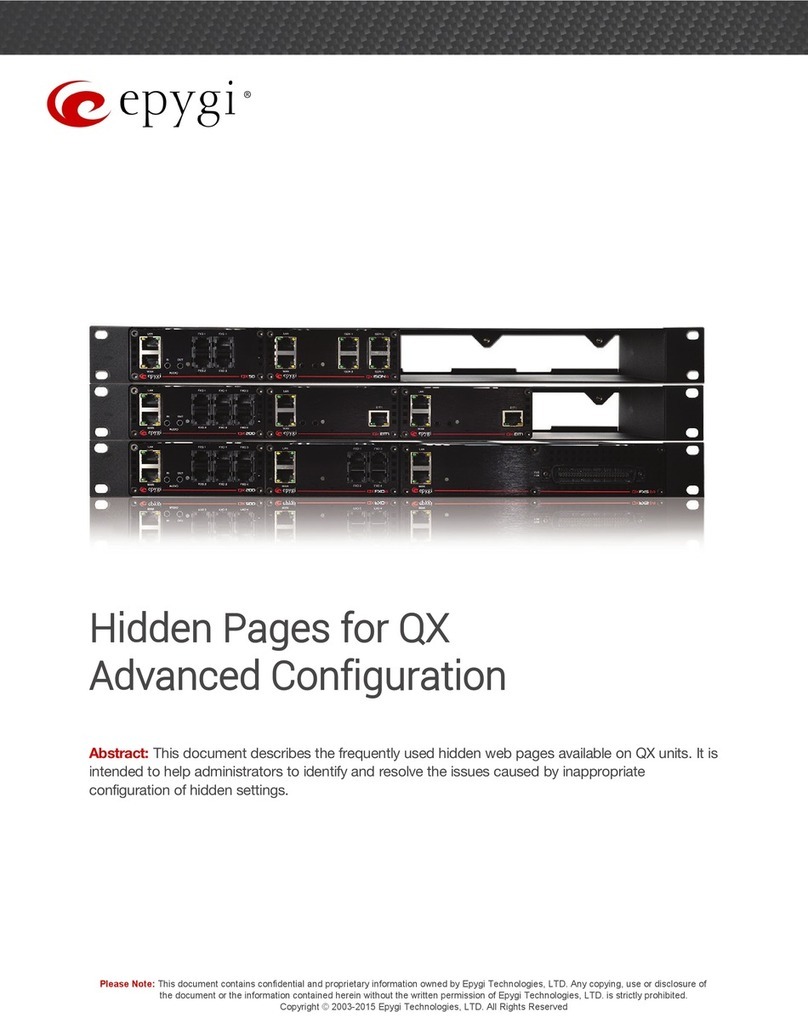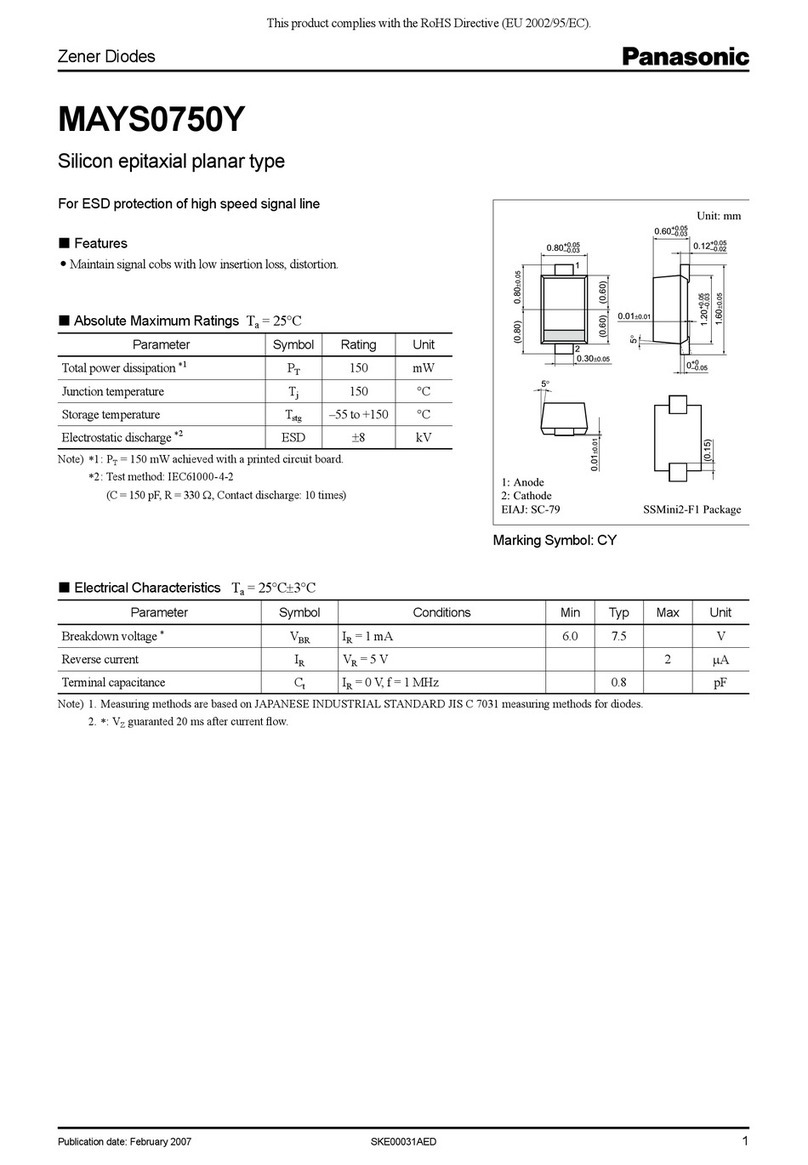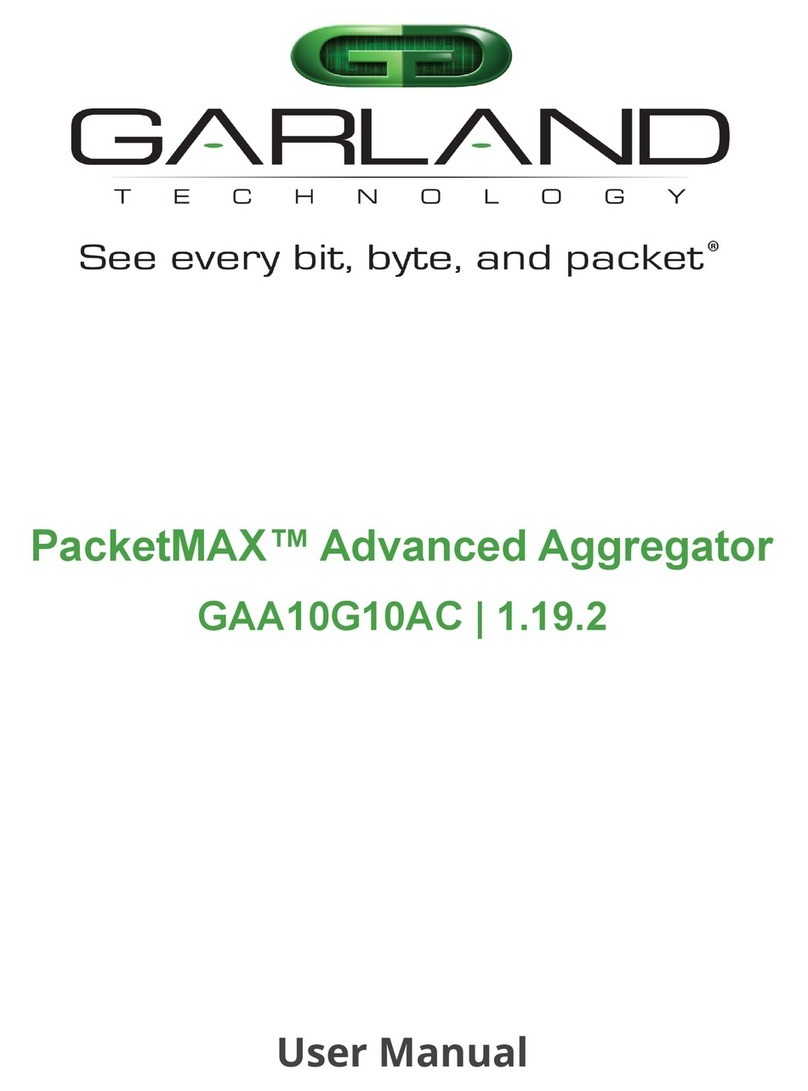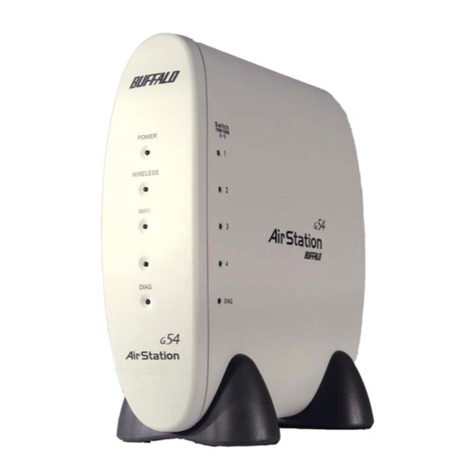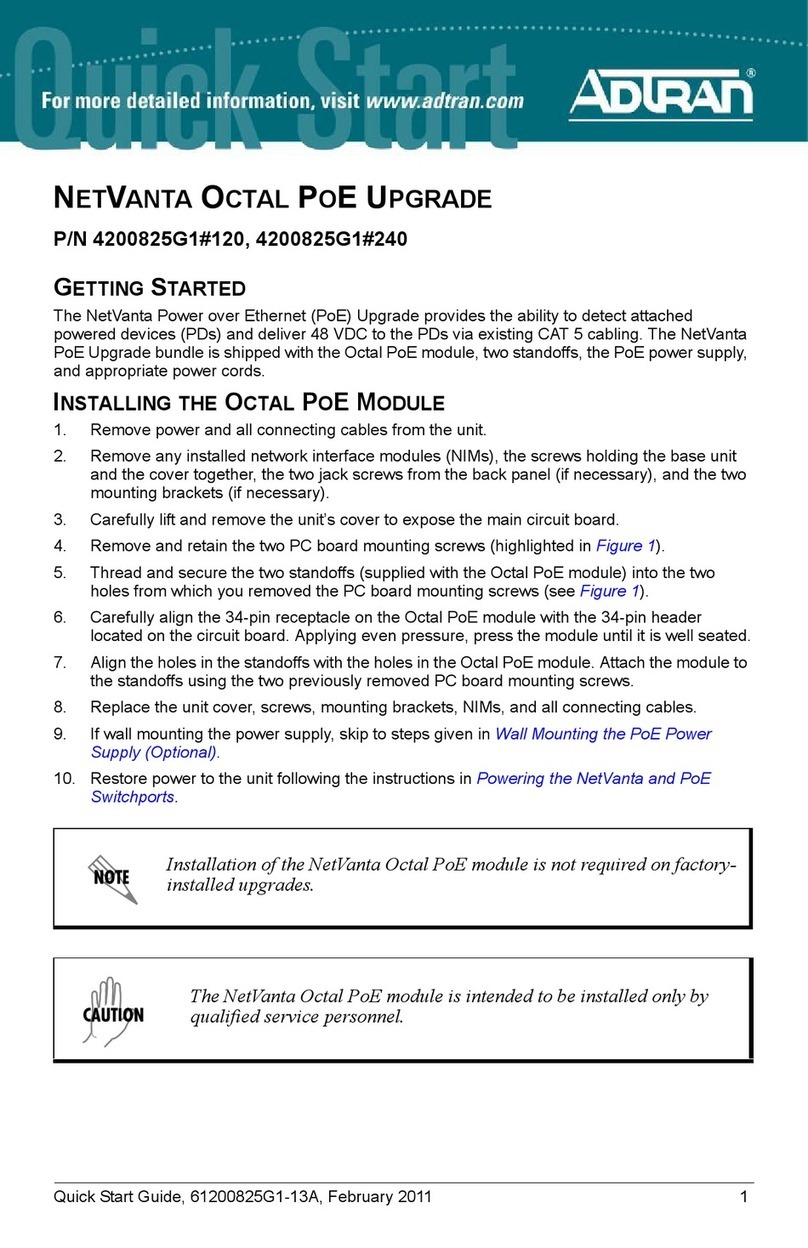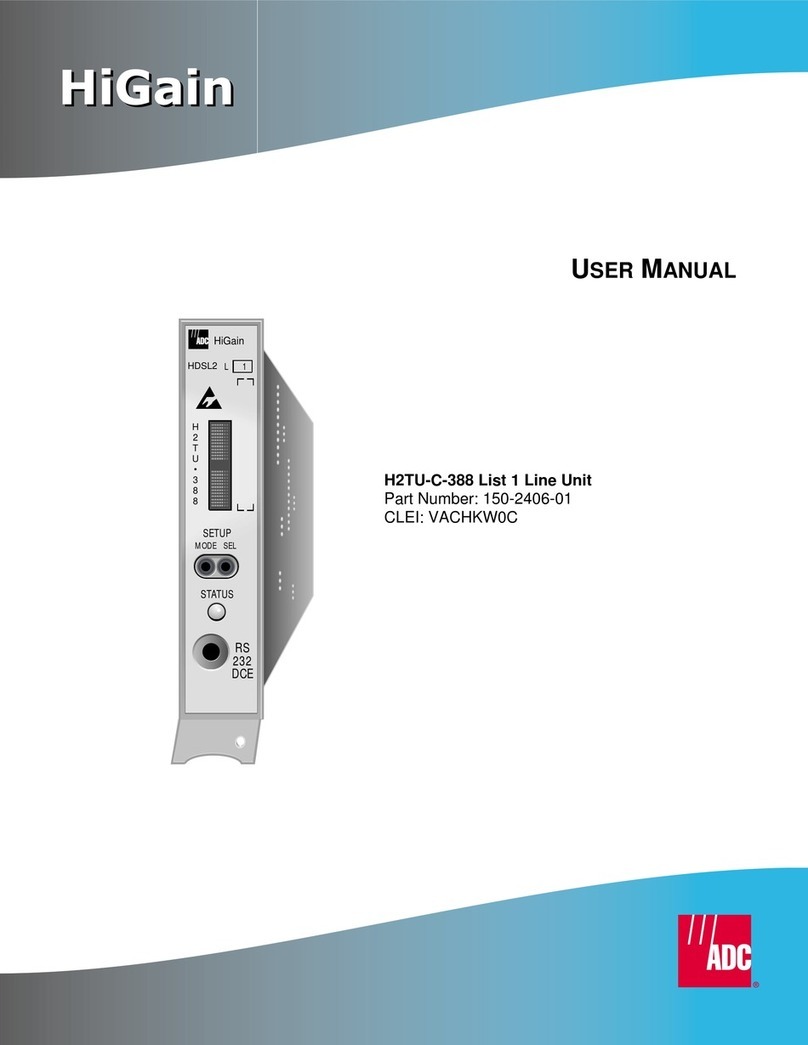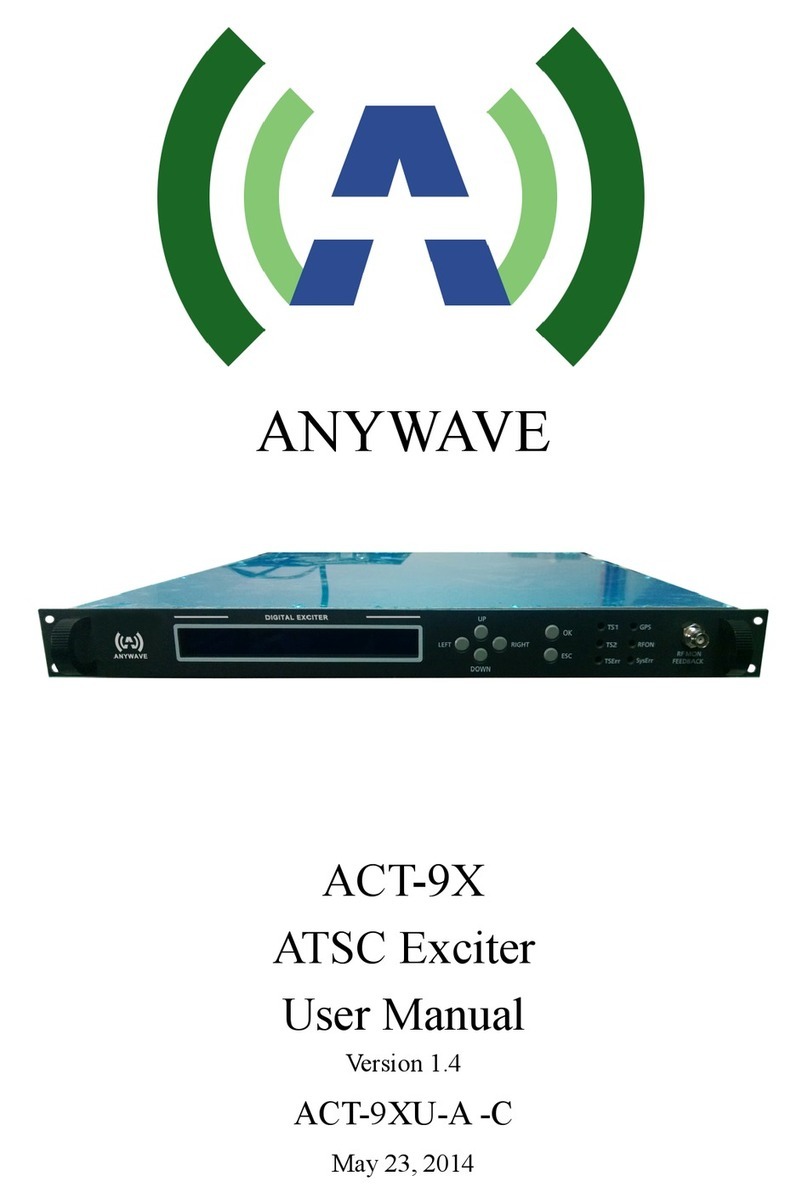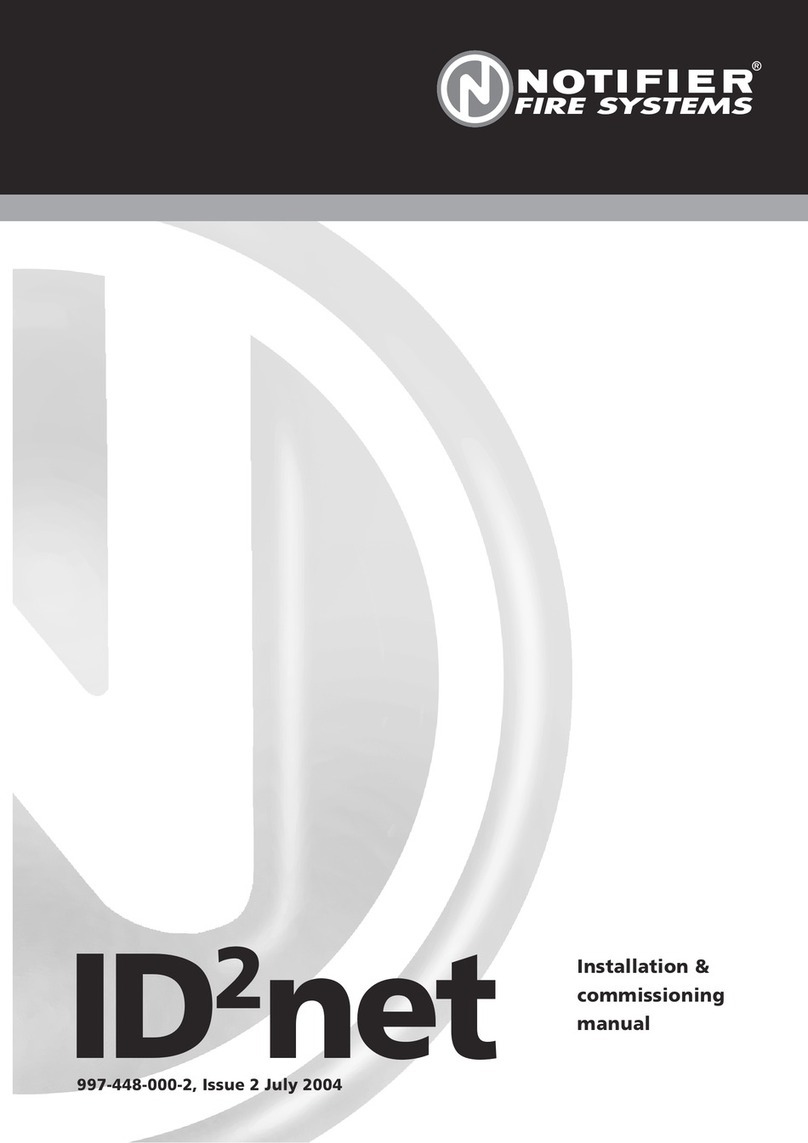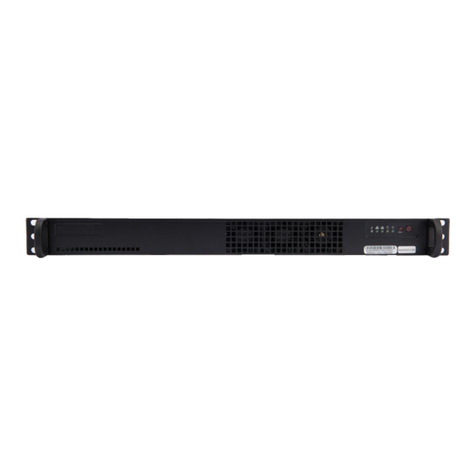Epygi QX50 Service manual

Manual II: Administrator’s Guide
Edition 2, October 2014
SW Release 6.0.1 and higher

QX50/QX200/QX2000; (SW Version 6.0.x) 2
QX50/QX200/QX2000 Manual II: Administrator’s Guide
Notice to Users
This document, in whole or in part, may not be reproduced, translated or reduced to any machine-readable form without prior written approval.
Epygi provides no warranty with regard to this document or other information contained herein and hereby expressly disclaims any implied warranties of
merchantability or fitness for any particular purpose in regard to this document or such information. In no event shall Epygi be liable for any incidental,
consequential or special damages, whether based on tort, contract or otherwise, arising out of or in connection with this document or other information
contained herein or the use thereof.
Copyright and Trademarks
Copyright © 2003-2014 Epygi Technologies, LTD. All Rights Reserved. Quadro and QX are registered trademarks of Epygi Technologies, LTD. Microsoft,
Windows and the Windows logo are registered trademarks of Microsoft Corporation. All other trademarks and brand names are the property of their
respective proprietors.
Emergency 911 Calls
YOU EXPRESSLY ACKNOWLEDGE THAT EMERGENCY 911 CALLS MAY NOT FUNCTION WHEN USING QUADRO OR QX AND THAT EPYGI TECHNOLOGIES,
LTD. OR ANY AFFILIATES (AGENTS) SUBSIDIARIES, PARTNERS OR EMPLOYEES ARE NOT LIABLE FOR SUCH CALLS.
Limited Warranty
Epygi Technologies, LTD. (‘Epygi’) warrants to the original end-user purchaser every Quadro and QX to be free from physical defects in material and
workmanship under normal use for a period of one (1) year from the date of purchase (proof of purchase required) or two (2) years from the date of
purchase (proof of purchase required) for products purchased in the European Union (EU). If Epygi receives notice of such defects, Epygi will, at its
discretion, either repair or replace products that prove to be defective.
This warranty shall not apply to defects caused by (i) failure to follow Epygi’s installation, operation or maintenance instructions; (ii) external power
sources such as a power line, telephone line or connected equipment; (iii) products that have been serviced or modified by a party other than Epygi or an
authorized Epygi service center; (iv) products that have had their original manufacturer’s serial numbers altered, defaced or deleted; (v) damage due to
lightning, fire, flood or other acts of nature.
In no event shall Epygi’s liability exceed the price paid for the product from direct, indirect, special, incidental or consequential damages resulting from the
use of the product, its accompanying software or its documentation. Epygi offers no refunds for its products. Epygi makes no warranty or representation,
expressed, implied or statutory with respect to its products or the contents or use of this documentation and all accompanying software, and specifically
disclaims its quality, performance, merchantability or fitness for any particular purpose.
Return Policy
If the product proves to be defective during this warranty period, please contact the establishment where the unit was purchased. The Integrator will
provide guidance on how to return the unit in accordance with its established procedures. Epygi will provide the Return Merchandise Authorization
Number to your retailer.
Please provide a copy of your original proof of purchase. Upon receiving the defective unit, Epygi, or its service center, will use commercially reasonable
efforts to ship the repaired or a replacement unit within ten business days after receipt of the returned product. Actual delivery times may vary depending
on customer location. The Distributor is responsible for shipping and handling charges when shipping to Epygi.
European Limited Warranty
The European Limited Warranty is the same as the Limited Warranty above, except the warranty period is for two years from the date of purchase.
Extended Warranty
Extended Warranty Option
Epygi offers an extended warranty program available for purchase by end users. This option is available at the time of purchase, extending the users
original warranty for an additional three (3) years. Combined with the original warranty, the extended warranty would offer a total of five (5) years
protection for European end users and four (4) years protection for non-European end users.
Extended Warranty Statement
Epygi Technologies, LTD. extends its Limited Warranty for an additional period of three (3) years from the date of the termination of the original Limited
Warranty period (proof of purchase required).
Epygi reserves the right to revise or update its products, pricing, software, or documentation without obligation to notify any individual or entity. Please
direct all inquiries to:
Epygi Technologies, LTD.
1400 Preston Road, Suite 300, Plano, Texas 75093

QX50/QX200/QX2000; (SW Version 6.0.x) 3
QX50/QX200/QX2000 Manual II: Administrator’s Guide
Administrative Council for Terminal Attachments (ACTA) Customer Information
This equipment complies with Part 68 of the FCC rules and the requirements adopted by the ACTA. Located on the equipment is a label that contains,
among other information, the ACTA registration number and ringer equivalence number (REN). If requested, this information must be provided to the
telephone company.
The REN is used to determine the quantity of devices which may be connected to the telephone line. Excessive REN’s on the telephone line may result in
the devices not ringing in response to an incoming call. In most, but not all areas, the sum of the REN’s should not exceed five (5.0). To be certain of the
number of devices that may be connected to the line, as determined by the total REN’s contact the telephone company to determine the maximum REN for
the calling area.
This equipment cannot be used on the telephone company-provided coin service. Connection to Party Line Service is subject to State Tariffs.
If this equipment causes harm to the telephone network, the telephone company will notify you in advance that temporary discontinuance of service may
be required. If advance notice isn’t practical, the telephone company will notify the customer as soon as possible. Also, you will be advised of your right
the file a complaint with the FCC if you believe it is necessary.
The telephone company may make changes in its facilities, equipment, operations, or procedures that could affect the operation of the equipment. If this
happens, the telephone company will provide advance notice in order for you to make the necessary modifications in order to maintain uninterrupted
service.
If trouble is experienced with this equipment, please contact EPYGI TECHNOLOGIES, LTD.
If the trouble is causing harm to the telephone network, the telephone company may request you to remove the equipment from the network until the
problem is resolved.
Electrical Safety Advisory
To reduce the risk of damaging power surges, we recommend you install an AC surge arrestor in the AC outlet from which the Quadro or QX is powered.
Industry Canada Statement
This product meets the applicable Industry Canada technical specifications.
Safety Information
Before using the Quadro or QX, please review and ensure the following safety instructions are adhered to:
•To prevent fire or shock hazard, do not expose your Quadro or QX to rain or moisture.
•To avoid electrical shock, do not open the Quadro or QX. Refer servicing to qualified personnel only.
•Never install wiring during a lightning storm.
•Never install telephone jacks in wet locations unless the jack is specified for wet locations.
•Never touch uninsulated telephone wire or terminals unless the telephone line has been disconnected at the network interface.
•Use caution when installing or modifying cable or telephone lines.
•Avoid using your Quadro or QX during an electrical storm.
•Do not use your Quadro, QX or telephone to report a gas leak in the vicinity of the leak.
•An electrical outlet should be as close as possible to the unit and easily accessible.
Emergency Services
The use of VoIP telephony is made available through IP networks such as the Internet and is dependent upon a constant source of electricity, network
availability and proper operation of the equipment. If a power outage, network disruption or equipment failure occurs, the VoIP telephony service could
be disabled. User understands that in any of those events the Quadro or QX may not be able to support 911 emergency services, and further, such services
may only be available via the user's regular telephone line or mobile lines that are not connected to the Quadro or QX. User further acknowledges that any
interruption in the supply or delivery of electricity, network availability or equipment failure is beyond Epygi's control and Epygi shall have no
responsibility for losses arising from such interruption.
Music on Hold Copyright
The default Music on Hold on the Quadro or QX is a 22 second fragment from Chopin's Nocturne Op.9 #2 performed by Marina Vardanyan and kindly
provided to Epygi Technologies, LTD. The recording is royalty free.
Compliance with Laws
You may not use the Epygi Materials for any illegal purpose or in any manner that violates applicable domestic or foreign law. You are responsible for
compliance with all domestic and foreign laws governing Voice over Internet Protocol (VoIP) calls.

QX50/QX200/QX2000; (SW Version 6.0.x) 4
QX50/QX200/QX2000 Manual II: Administrator’s Guide
Table of Contents
Manual I: see Installation Guide
Step-by-step guide to install and configure QX IP PBX basically.
Manual II: Administrator's Guide
About this Administrator's Guide..................................................................................................................................................................................8
QX IP PBX’s Graphical Interface.....................................................................................................................................................................................9
Dashboard – Administrator’s Main Page ............................................................................................................................................................................................. 9
Administrator’s Menus..................................................................................................................................................................................................10
Setup Menu .......................................................................................................................................................................................................................10
Basic Setup ................................................................................................................................................................................................................................................. 11
System (LAN) – System Configuration Wizard ........................................................................................................................................................................................................... 11
Internet (WAN) - Internet Configuration Wizard ......................................................................................................................................................................................................12
Needed Bandwidth for IP Calls.................................................................................................................................................................................................................................... 14
Date and Time Settings......................................................................................................................................................................................................................................................... 15
System Mail Settings – Email (SMTP) ............................................................................................................................................................................................................................. 16
SMS Settings – Short Text Messaging ............................................................................................................................................................................................................................. 17
System Security......................................................................................................................................................................................................................................... 18
Licensed Features..................................................................................................................................................................................................................................... 18
Feature Keys............................................................................................................................................................................................................................................................................. 18
Free Trial Activation.............................................................................................................................................................................................................................................................. 19
Redundancy ............................................................................................................................................................................................................................................... 20
Language Pack........................................................................................................................................................................................................................................... 20
Update Languages for IP Phones ...................................................................................................................................................................................................................................... 21
Extensions Menu .............................................................................................................................................................................................................22
Extensions Management......................................................................................................................................................................................................................... 23
Add Extension.......................................................................................................................................................................................................................................................................... 24
User Extension Settings .................................................................................................................................................................................................................................................25
Pickup Group Extension Settings ............................................................................................................................................................................................................................... 32
Call Park Extension Settings......................................................................................................................................................................................................................................... 34
Paging Group Extension Settings ............................................................................................................................................................................................................................... 36
ACD Group Extension Settings .................................................................................................................................................................................................................................... 37
Recording Box Extension Settings .............................................................................................................................................................................................................................40
Recording Box.................................................................................................................................................................................................................................................................... 42
Attendant Extension Settings ...................................................................................................................................................................................................................................... 43
Extension Codecs.............................................................................................................................................................................................................................................................. 49
Call Park and Directed Call Park Service .................................................................................................................................................................................................................51
Barge In Service ................................................................................................................................................................................................................................................................ 51
Add Multiple Extensions...................................................................................................................................................................................................................................................... 52
User Extension Bulk Import ............................................................................................................................................................................................................................................... 52
Conferences................................................................................................................................................................................................................................................ 53
Conferences Management...................................................................................................................................................................................................................................................54
Add Conference ....................................................................................................................................................................................................................................................................... 55
Email Default Settings........................................................................................................................................................................................................................................................... 55
Upload Universal Extension Recordings............................................................................................................................................................................................ 55
Upload Universal Extension Recordings - Hold music.......................................................................................................................................................................................56
Extensions Directory ............................................................................................................................................................................................................................... 56
Receptionist Management ..................................................................................................................................................................................................................... 57
ACD Management ..................................................................................................................................................................................................................................... 60
Authorized Phones Database ................................................................................................................................................................................................................ 64
Call Back Services ............................................................................................................................................................................................................................................................. 65
Interfaces Menu...............................................................................................................................................................................................................67

QX50/QX200/QX2000; (SW Version 6.0.x) 5
QX50/QX200/QX2000 Manual II: Administrator’s Guide
IP Lines ........................................................................................................................................................................................................................................................ 68
IP Line Settings ........................................................................................................................................................................................................................................................................ 69
Supported SIP Phones .......................................................................................................................................................................................................................................................... 69
Programmable Keys Configuration ................................................................................................................................................................................................................................. 70
IP Phone Templates............................................................................................................................................................................................................................................................... 71
IP Phones Logo ........................................................................................................................................................................................................................................................................ 72
FXS Gateways ........................................................................................................................................................................................................................................................................... 73
FXS Lines ..................................................................................................................................................................................................................................................... 74
FXS (On-board) Line Settings ............................................................................................................................................................................................................................................74
Diagnostic Loopback ............................................................................................................................................................................................................................................................. 75
Hot Desking......................................................................................................................................................................................................................................................................... 75
FXO Settings ............................................................................................................................................................................................................................................... 76
E1/T1 Trunk Settings .............................................................................................................................................................................................................................. 77
Incoming Interdigit Service ................................................................................................................................................................................................................................................ 84
ISDN Trunk Settings................................................................................................................................................................................................................................. 85
External PSTN Gateways......................................................................................................................................................................................................................... 89
Authorization Parameters................................................................................................................................................................................................................................................... 89
Telephony Menu..............................................................................................................................................................................................................90
VoIP Carrier Wizard ................................................................................................................................................................................................................................ 91
Call Routing Table .................................................................................................................................................................................................................................... 92
Call Routing............................................................................................................................................................................................................................................................................... 99
Local AAA Table ................................................................................................................................................................................................................................................................... 100
Global Speed Dial Directory............................................................................................................................................................................................................................................. 100
Allowed Characters and Wildcards ........................................................................................................................................................................................................................ 101
Best Matching Algorithm ............................................................................................................................................................................................................................................ 102
Entering SIP Addresses Correctly ................................................................................................................................................................................................................................. 105
SIP Tunnel Settings ............................................................................................................................................................................................................................................................. 105
Class of Service ..................................................................................................................................................................................................................................................................... 106
Call Recording Settings .........................................................................................................................................................................................................................107
NAT Traversal Settings .........................................................................................................................................................................................................................109
General Settings ................................................................................................................................................................................................................................................................... 109
SIP Parameters ..................................................................................................................................................................................................................................................................... 109
RTP Parameters ................................................................................................................................................................................................................................................................... 109
STUN Parameters ................................................................................................................................................................................................................................................................ 110
NAT Exclusion....................................................................................................................................................................................................................................................................... 110
RTP Settings .............................................................................................................................................................................................................................................111
SIP Settings...............................................................................................................................................................................................................................................112
SIP Aliases .............................................................................................................................................................................................................................................................................. 113
TLS Certificates..................................................................................................................................................................................................................................................................... 113
Advanced Settings ..................................................................................................................................................................................................................................113
Voice Mail Common Settings........................................................................................................................................................................................................................................... 113
RTP Streaming Channels .................................................................................................................................................................................................................................................. 114
Gain Control........................................................................................................................................................................................................................................................................... 114
3PCC Settings ........................................................................................................................................................................................................................................................................ 115
RADIUS Client Settings ...................................................................................................................................................................................................................................................... 115
Dial Timeout .......................................................................................................................................................................................................................................................................... 117
Call Quality Notification .................................................................................................................................................................................................................................................... 117
Firewall Menu ................................................................................................................................................................................................................118
Firewall .....................................................................................................................................................................................................................................................119
Firewall and NAT ................................................................................................................................................................................................................................................................. 119
Advanced Firewall Settings ............................................................................................................................................................................................................................................. 119
IDS Log..................................................................................................................................................................................................................................................................................... 119
Filtering Rules .........................................................................................................................................................................................................................................120
View All Filtering Rules ..................................................................................................................................................................................................................................................... 120
Incoming Traffic/Port Forwarding............................................................................................................................................................................................................................... 121
Outgoing Traffic ................................................................................................................................................................................................................................................................... 121
Management Access ........................................................................................................................................................................................................................................................... 121
Call Control Access.............................................................................................................................................................................................................................................................. 121

QX50/QX200/QX2000; (SW Version 6.0.x) 6
QX50/QX200/QX2000 Manual II: Administrator’s Guide
SIP Access ............................................................................................................................................................................................................................................................................... 122
Blocked IPs............................................................................................................................................................................................................................................................................. 122
Allowed IPs ............................................................................................................................................................................................................................................................................ 122
Custom Services ......................................................................................................................................................................................................................................123
Service Pool Configuration .............................................................................................................................................................................................................................................. 123
IP Groups ..................................................................................................................................................................................................................................................124
IP Pool Configuration......................................................................................................................................................................................................................................................... 124
SIP IDS Settings .......................................................................................................................................................................................................................................126
Network Menu................................................................................................................................................................................................................127
IP Routing Configuration......................................................................................................................................................................................................................128
IP Static Routes..................................................................................................................................................................................................................................................................... 128
IP Policy Routes.................................................................................................................................................................................................................................................................... 128
PPTP/L2TP Routes ............................................................................................................................................................................................................................................................. 129
DHCP Settings ..........................................................................................................................................................................................................................................129
DHCP Server .......................................................................................................................................................................................................................................................................... 130
DHCP Advanced Settings .................................................................................................................................................................................................................................................. 131
DHCP Leases.......................................................................................................................................................................................................................................................................... 131
DHCP Settings for the VLAN Interface......................................................................................................................................................................................................................... 132
DNS Settings .............................................................................................................................................................................................................................................132
DNS Server Settings ............................................................................................................................................................................................................................................................ 132
Dynamic DNS Settings ....................................................................................................................................................................................................................................................... 133
PPP/ PPTP Settings ................................................................................................................................................................................................................................134
Advanced PPP Settings...................................................................................................................................................................................................................................................... 134
SNMP Settings ..........................................................................................................................................................................................................................................135
Global SNMP Settings......................................................................................................................................................................................................................................................... 135
SNMP Trap Settings ............................................................................................................................................................................................................................................................ 136
VLAN Configuration ...............................................................................................................................................................................................................................136
VPN Configuration ..................................................................................................................................................................................................................................137
IPSec Configuration ............................................................................................................................................................................................................................................................ 137
PPTP/L2TP Configuration ............................................................................................................................................................................................................................................... 140
Status Menu ....................................................................................................................................................................................................................144
System Status...........................................................................................................................................................................................................................................145
General Information........................................................................................................................................................................................................................................................... 145
Network Status ..................................................................................................................................................................................................................................................................... 145
Lines Status............................................................................................................................................................................................................................................................................ 145
Memory Status...................................................................................................................................................................................................................................................................... 147
Hardware Status .................................................................................................................................................................................................................................................................. 147
SIP Registration Status ...................................................................................................................................................................................................................................................... 148
IP Lines Registration Status............................................................................................................................................................................................................................................. 148
License Status ....................................................................................................................................................................................................................................................................... 148
Events ........................................................................................................................................................................................................................................................149
System Events....................................................................................................................................................................................................................................................................... 149
Event Settings ....................................................................................................................................................................................................................................................................... 149
Call History ...............................................................................................................................................................................................................................................150
Successful, Missed and Unsuccessful Calls ................................................................................................................................................................................................................ 150
Call History Settings ........................................................................................................................................................................................................................................................... 151
CDR Archive........................................................................................................................................................................................................................................................................... 152
Archiving Settings ............................................................................................................................................................................................................................................................... 153
RTP Statistics......................................................................................................................................................................................................................................................................... 154
FAX Statistics......................................................................................................................................................................................................................................................................... 155
Conference History ................................................................................................................................................................................................................................155
Conferences ........................................................................................................................................................................................................................................................................... 155
Successful Calls and Unsuccessful Outgoing Calls .................................................................................................................................................................................................. 156
CDR Settings .......................................................................................................................................................................................................................................................................... 156
LAN/WAN..................................................................................................................................................................................................................................................157
LAN and WAN Interface Statistics................................................................................................................................................................................................................................. 157
Statistics....................................................................................................................................................................................................................................................158
Network Transfer ................................................................................................................................................................................................................................................................ 158

QX50/QX200/QX2000; (SW Version 6.0.x) 7
QX50/QX200/QX2000 Manual II: Administrator’s Guide
PSTN Channel Usage........................................................................................................................................................................................................................................................... 159
Maintenance Menu .......................................................................................................................................................................................................160
Diagnostics ...............................................................................................................................................................................................................................................161
Security Diagnostics ........................................................................................................................................................................................................................................................... 161
Call Capture............................................................................................................................................................................................................................................................................ 161
Ping ........................................................................................................................................................................................................................................................................................... 162
Traceroute.............................................................................................................................................................................................................................................................................. 163
System Logs..............................................................................................................................................................................................................................................163
System Logs Settings.......................................................................................................................................................................................................................................................... 163
Remote Logs Settings......................................................................................................................................................................................................................................................... 164
Logs Archive.............................................................................................................................................................................................................................................164
User Rights Management......................................................................................................................................................................................................................165
Users ......................................................................................................................................................................................................................................................................................... 165
Roles ......................................................................................................................................................................................................................................................................................... 166
Backup/Restore......................................................................................................................................................................................................................................166
Automatic Backup ............................................................................................................................................................................................................................................................... 167
Download Legible Configuration................................................................................................................................................................................................................................... 167
Upload Legible Configuration ......................................................................................................................................................................................................................................... 168
Firmware Update....................................................................................................................................................................................................................................168
Upload Firmware................................................................................................................................................................................................................................................................. 169
Get Firmware From Server.............................................................................................................................................................................................................................................. 170
Automatic Firmware Update........................................................................................................................................................................................................................................... 171
Reboot...................................................................................................................................................................................................................................................................................... 171
Registration Form ............................................................................................................................................................................................................................................................... 172
Appendix: PBX Services for QX IP PBX’s Administrator.....................................................................................................................................173
Appendix: Conference Services for Moderators and Participants ..................................................................................................................174
Appendix: System Default Values.............................................................................................................................................................................176
Administrator Settings..........................................................................................................................................................................................................................176
Extension Settings ..................................................................................................................................................................................................................................182
Appendix: Moderator's Menus ..................................................................................................................................................................................184
Conference Moderator’s Main Page...................................................................................................................................................................................................184
Conference Progress..............................................................................................................................................................................................................................185
Recorded Conferences ..........................................................................................................................................................................................................................186
Conference Settings ...............................................................................................................................................................................................................................187
General Settings ................................................................................................................................................................................................................................................................... 187
Recording Settings .............................................................................................................................................................................................................................................................. 188
Customization....................................................................................................................................................................................................................................................................... 189
Participants............................................................................................................................................................................................................................................................................ 190
New Participants Configuration .............................................................................................................................................................................................................................. 191
Handset Added Participants Configuration......................................................................................................................................................................................................... 192
Schedule .................................................................................................................................................................................................................................................................................. 192
Send Notification Mail........................................................................................................................................................................................................................................................ 193
Appendix: Software License Agreement.................................................................................................................................................................194
Manual III: see Extension User's Guide
Describes detailed the menus available for extension users and includes further all call codes at a glance.

QX50/QX200/QX2000; (SW Version 6.0.x) 8
QX50/QX200/QX2000 Manual II: Administrator’s Guide
About this Administrator's Guide
The QX IP PBX Manual is divided into three parts:
•Manual-I: Installation Guide gives step-by-step instructions to provision the QX IP PBX and configure the phone extensions with the Epygi SIP Server.
After successfully configuring the QX IP PBX, users will be able to make SIP phone calls to remote QX IP PBX devices, make local calls to the PSTN and
to access the Internet from devices connected to the LAN.
•Manual-II: Administrator's Guide explains all QX IP PBX management menus available for administrators only. It includes a list of all System Default
Values.
•Manual-III: Extension User's Guide explains all QX IP PBX management menus available for extension users. A list of all call codes can be found there,
too.
This guide contains many example screen illustrations. Since QX IP PBXs offer a wide variety of features and functionality, the example screens shown may
not appear exactly the same for your particular QX IP PBX as they appear in this manual. The example screens are for illustrative and explanatory
purposes, and should not be construed to represent your own unique environment.
QX IP PBX’s Graphical Interface describes to the QX IP PBX's graphical user interface and explains all recurrent buttons.
Administrator’s Menus explains the Administrator's management pages according to the menu structure shown on the main page of the QX IP PBX
management.
Appendix: PBX Services for QX IP PBX’s Administrator explains PBX features for administrator accessible from the handset.
Appendix: System Default Values lists all factory defaults.
Appendix: Moderator's Menus explains all menus that can be accessed and configured by conference moderators. (Applicable if the Conference Server
and/or the Video Conferencing features are activated on the system.)
Appendix: Software License Agreement includes the contract for using QX IP PBX's hardware and software.

QX50/QX200/QX2000; (SW Version 6.0.x) 9
QX50/QX200/QX2000 Manual II: Administrator’s Guide
QX IP PBX’s Graphical Interface
Dashboard – Administrator’s Main Page
When the administrator logs in, the Epygi QX Management page is displayed with a table of active calls (including information about call peers, call
duration and start time) at the startup. The number of total active calls is displayed below the table.
The button Terminate next to each active call is used to terminate the corresponding call.
The Start Recording button next to each active call (except for calls to Auto Attendant) is used to manually start the recording of the corresponding call.
Once the call recording is started, the button changes to Stop now used to manually stop the call recording. The call recording can be restarted again if
needed.
The following main menus are available on Epygi QX50/QX200/QX2000: Setup,Extensions,Interfaces,Telephony,Firewall,Network,Status and
Maintenance. By clicking on menus the administrator may access the settings in each respective category and perform actions specific to each category.
The following menus may additionally occur when pressing to the PBX or Conference extensions:
•Your Extension (see Manual III: Extension User’s Guide)
•Conference
The Return link is used to return to the Epygi QX50/QX200/QX2000 Management page.
Fig.II- 1: Epygi QX IP PBX Management page
The functional button Renew Wan IP Address appears on the administrator’s main QX IP PBX Management page if the QX IP PBX device acts as a DHCP
client. The Renew WAN IP Address button is used to obtain a new WAN IP address in case, e.g., the QX IP PBX moves to another network.
The button Pending Events will be displayed in the upper right corner of the Administrator’s Main Menu page. Clicking on the button will lead to the
Events page that can be also accessed from the Status Menu.
Language selection is available only when the custom Language Pack has been uploaded and it is used to enable custom language for QX GUI or returning
back to the default language - English.
The list of Users currently logged in is seen in the lower right corner of the Administrator's Main Menu. Information about IP address user accessed QX
IP PBX GUI from, the username user is logged in and the time until the next automatically logout is provided herein. The current version of the QX IP PBX's
firmware and of its boot loader is also available here. The idle session timeout is set to 20 minutes. If no action is performed during that time, user will be
automatically moved to the Login page and will be requested to login again.
Log Out is used to close the session between the user PC and QX and to leave the QX Web Management or to enter the management with another login.

QX50/QX200/QX2000; (SW Version 6.0.x) 10
QX50/QX200/QX2000 Manual II: Administrator’s Guide
Administrator’s Menus
Setup Menu
The Setup Menu consists of the following sections:
•
−
Basic Setup
−
For QX50/QX200 - System (LAN)
−
For QX2000 – System Configuration Wizard
−
For QX50/QX200 - Internet (WAN)
−
For QX2000 – Uplink Configuration Wizard
−
Date and Time
−
Email (SMTP)
•
Short Text Messaging (SMS)
•
System Security
−
Licensed Features
−
Feature Keys
•
Free Trial Activation
•
Redundancy
Language Pack
Fig.II- 2: Setup Menu page

QX50/QX200/QX2000; (SW Version 6.0.x) 11
QX50/QX200/QX2000 Manual II: Administrator’s Guide
Basic Setup
System (LAN) – System Configuration Wizard
The System Configuration Wizard allows the administrator to define the QX IP PBX’s Local Area Network settings and to specify regional configuration
settings to make QX IP PBX operational in its LAN. The System Configuration Wizard MUST be run upon QX IP PBX's first startup to make sure that it
works properly in its network environment. The Wizard allows navigating through the following basic configuration parameters and settings:
•System Configuration (see below)
•DHCP Settings for the LAN Interface
•Regional Settings and Preferences (see below)
•Emergency Codes and PSTN Access Code Settings (see below)
DHCP Settings for the LAN are described in the chapters
below. The LAN configuration and regional settings will be
described later in this chapter.
Please Note:
It is strongly recommended to leave the
factory default settings if their meanings are not fully
clear to the administrator.
Fig.II- 3: System Configuration Wizard – Getting Started page
The
System Configuration
page contains the host name, IP
address and Subnet Mask information about the QX IP PBX
LAN interface. These settings make QX IP PBX available to the
internal network.
The System Configuration page offers the following input
options:
Host Name requires a host name for the QX IP PBX device.
Domain Name requires the LAN side domain name which the
QX IP PBX belongs to.
IP Address requires the QX IP PBX host address for the LAN
interface.
Subnet Mask requires the QX IP PBX hosts’ Subnet Mask.
Fig.II- 4: System Configuration Wizard - System Configuration page

QX50/QX200/QX2000; (SW Version 6.0.x) 12
QX50/QX200/QX2000 Manual II: Administrator’s Guide
The
Regional Settings and Preferences
are used to select
settings specific to the location of the QX IP PBX. This is
important for the functionality of the voice subsystem.
The Regional Settings and Preferences page has two drop
down lists to select the Your Locale (location)and a
corresponding Timezone.QX IP PBX
will support Daylight
Savings (DST) correction if it is available for the selected time
zone.
This page also has a manipulation radio button group to
choose:
•System Language – selection is available only when the
custom Language Pack has been uploaded and it is used
to enable custom language for system voice messages or
returning back to the default language English.
Fig.II- 5: System Configuration Wizard - Regional Settings page
The
Emergency Codes
and
PSTN Access Code Settings
are
used to configure the emergency dial plan.
The Emergency Codes text field requires the PSTN numbers
of the emergency or lifeline services. Multiple emergency
codes, separated by commas, can be inserted in this field. For
each emergency code, a routing pattern will be generated in
the Call Routing Table, which will allow faster and easier calls
to emergency destinations.
The PSTN Access Code drop down list allows you to select the
prefix code for accessing the PSTN line in the routing mode.
Dialing the digits inserted in this text field will provide the
PSTN dial tone when dialed from the handset.
Fig.II- 6: System Configuration Wizard - Emergency Codes and PSTN Access Code Settings page
Internet (WAN) - Internet Configuration Wizard
The Internet Configuration Wizard (Uplink Configuration Wizard in case of QX2000) allows the administrator to configure the WAN interface settings
and to adjust QX IP PBX’s connectivity with an external network. The Internet Configuration Wizard MUST be run for QX IP PBX to be connected to
the Internet.

QX50/QX200/QX2000; (SW Version 6.0.x) 13
QX50/QX200/QX2000 Manual II: Administrator’s Guide
All the settings of the
Internet Configuration Wizard
are
described in the chapters below except those for the IP
settings, which will be described in this chapter.
Attention: It is strongly recommended not to change the
factory default settings if their meanings are not fully
clear to an administrator.
Fig.II- 7: Internet Configuration Wizard – Getting Started page
The Wizard allows navigating through the following basic configuration parameters and settings:
•Uplink configuration (see below)
For Protocols
PPPoE
(available only for QX50/QX200):
•
•WAN Interface Configuration (see below)
PPP/ PPTP Settings
•
DNS Settings
For Protocols
PPTP
(available only for QX50/QX200):
•WAN IP Configuration (see below)
•PPP/ PPTP Settings
•
WAN Interface Configuration (see below)
•
DNS Settings
For Protocols
Ethernet
:
•WAN IP Configuration
•WAN Interface
Configuration (see below)
•
DNS Settings
The Uplink Configuration page allows you to select the QX
IP PBX‘s WAN interface connection type and its bandwidth
settings. These settings will make QX IP PBX available to the
external network.
Depending on the Uplink Interface Protocol selection, the
page following the Uplink Configuration page is different.
Thus if PPPoE is selected, the next page will be PPP
Configuration, while selecting Ethernet will bring up the
WAN IP Configuration page.
The Uplink Configuration
page offers the following
components:
The WAN Interface Protocol radio buttons are used to
choose the protocol depending on the requirements of the
ISP (Internet Service Provider):
•
PPPoE (available only for QX50/QX200) - turns on
the PPP over an Ethernet connection.
•
PPTP (available only for QX50/QX200)– turns on
the Point to Point Tunneling Protocol (PPTP)
interface used for the connection between QX IP
PBX and ADSL modem. A fixed IP address
configuration is needed in this case.
•
Ethernet - turns on the Ethernet connection
Fig.II- 8: Internet Configuration Wizard - Uplink Configuration page
The WAN Interface Bandwidth settings allow the specification of the upstream and downstream speeds in kbit/s, helping to assure the quality of IP calls.
An IP call looses the voice quality if there is no available bandwidth. When approaching the limits of bandwidth capacity, another IP call will be declined.
The bandwidth provided by the ISP has to be specified in the text fields Upstream Speed and Downstream Speed. The default entry in both fields is
100000, the maximum bandwidth of a 100 Mb Ethernet. You may see the required bandwidth in the chapter Needed Bandwidth for IP Calls.
The Min Data Rate text field requires the amount of upstream bandwidth that ought to remain for data applications even if voice applications use the
entire available upstream bandwidth. The value selected here needs to be smaller than the upstream bandwidth and is measured in kbit/s.

QX50/QX200/QX2000; (SW Version 6.0.x) 14
QX50/QX200/QX2000 Manual II: Administrator’s Guide
The WAN IP Configuration page is only displayed if Ethernet or PPTP has been selected to be the uplink protocol. It offers the following components:
The
Assign automatically via DHCP
radio-button selection
switches to automatic retrieval of the WAN IP address from a
DHCP server at the ISP/uplink.
Please Note: DHCP referred to here is the one that runs on
the provider’s side and not the QX IP PBX’s personal DHCP
server.
The Assign Manually radio-button switches to the manual
adjustment of IP settings. This selection requests the
following parameters:
IP Address requires the IP address for the QX IP PBX WAN
interface.
Subnet Mask requires the subnet mask for the QX IP PBX
device WAN interface.
Default Gateway requires the IP address of the router where
all packets are to be sent to, for example, to the router of the
provider.
Fig.II- 9: Internet Configuration Wizard - WAN IP Configuration page
The
WAN Interface Configuration
page may be used to
modify the MAC address of the QX IP PBX. This might be
necessary if the ISP (Internet Service Provider) requires a
specified MAC address, for example, for authentication. This
page offers the following components:
MAC Address Assignment manipulation radio-buttons:
•This Device turns to the default MAC address of the QX
IP PBX.
•User Defined requires user defined MAC Address.
The MTU drop down list allows you to select the maximum
packet size on the Ethernet (in bytes). MTU is used to
fragment the packets before transmitting them to the
network. The MTU preferred value is dependent on the
Ethernet connection. The default MTU size is 1500 Bytes for
Ethernet and 1400 Bytes for PPPoE.
Fig.II- 10: Internet Configuration Wizard – WAN Interface Configuration page
Needed Bandwidth for IP Calls
The bandwidth required by an IP call depends on the codecs used and these specifications are listed in the tables below:
Required Bandwidth for Standard Packets:
Packet
Size in
msec.
Needed bandwidth in kbit/s using the Codecs:
G.711u/G.711
a
G.726-16
G.726-24
G.726-32
G.726-40
G.729a
iLBC-13.33 G.722
G.722.1
10
105
58
66
74
82
50
-
105
74
20
84
37
45
53
61
29
-
84
53
30
76
30
38
45
53
22
27
76
45
40
74
27
34
42
50
19
-
74
42
50
71
25
32
40
48
17
-
71
40
60
67
22
30
37
45
15
20
67
37

QX50/QX200/QX2000; (SW Version 6.0.x) 15
QX50/QX200/QX2000 Manual II: Administrator’s Guide
Needed Bandwidth for Encrypted Packets when using a SRTP:
Packet
Size in
msec.
Needed bandwidth in kbit/s using the Codecs:
G.711u
/
G.711a
G.726-16
G.726-24
G.726-32
G.726-40
G.729a
iLBC-13.33
G.722
G.722.1
10
114
66
74
82
90
58
-
114
82
20
89
41
49
57
65
33
-
89
57
30
81
33
41
49
57
26
31
81
49
40
76
28
36
44
52
20
-
76
44
50
74
26
34
42
50
18
-
74
42
60
72
24
32
40
48
16
22
72
40
Required Bandwidth for Encrypted Packets when a VPN is used:
Packet
Size in
msec.
Needed bandwidth in kbit/s using the Codecs:
G.711u
/
G.711a
G.726-16
G.726-24
G.726-32
G.726-40
G.729a
iLBC-13.33
G.722
G.722.1
10
148
98
105
118
124
92
-
148
118
20
105
59
65
74
81
49
-
105
74
30
90
43
52
60
66
35
41
90
60
40
85
38
45
53
61
30
-
85
53
50
80
34
41
48
56
26
-
80
48
60
74
29
37
45
52
22
26
74
45
Date and Time Settings
The Date and Time page provides information about the current system time and date. The settings may be updated through the international time and
date servers.
Time is used to set the local time (hour, minute).
Date is used to set the date (month, day, year).
Enable Simple Network Time Protocol Server
enables the
SNTP (Simple Network Time Protocol) server on QX IP PBX,
thus QX IP PBX becomes the timeserver for its LAN.
Enable Simple Network Time Protocol Client enables the
SNTP client on the QX IP PBX, thus QX IP PBX becomes a client
to an external timeserver. A checkbox disables Date and Time
drop down lists and enables the following parameters:
The SNTP Servers table lists all defined NTP Servers.
The Add functional button opens an Add SNTP Server page
where a new NTP server can be defined. This page offers the
NTP Server radio buttons that are used to choose between a
manual and a predefined NTP server.
•Manual requires the NTP server’s
FQDN (Full
Qualified Domain Name) or its IP address.
•Predefined is used to select the NTP server’s host
address from the drop down list, where the most
common NTP servers are listed.
Fig.II- 11: Date and Time Settings page

QX50/QX200/QX2000; (SW Version 6.0.x) 16
QX50/QX200/QX2000 Manual II: Administrator’s Guide
The
Move Up
and
Move Down
functional buttons are used to
sort NTP servers in the order they need to be accessed. If the
NTP server in the first position of the SNTP Servers table does
not answer, NTP server in the next position will try to be
reached.
Please Note: You can add another NTP server to the list if the
defined NTP servers are not functional (for example, QX IP
PBX's date/time is not being updated automatically).
Polling Interval indicates the time interval for the periodical
synchronization between the timeserver and QX IP PBX. It
counts in hours.
Fig.II- 12: Add SNTP Server page
Attention: Date and Time Settings will be reset if QX IP PBX has lost power.
System Mail Settings – Email (SMTP)
The Email (SMTP) page allows you to send warnings automatically about the board status or problems to the administrator. System events that require
email notification are selected on the Events page. System mail must be enabled and the SMTP server needs to be configured for voice message
transmission to the extension user’s mailing account.
QX IP PBX may automatically generate emails to the administrator:
•If events specified in the Events list occur
•If voice mails are set from the Voice Mail Settings (see Manual III: Extension User’s Guide) to be sent as e-mail
With the Enable checkbox system mail sending and voice messages transmission to the extension user's mailbox could be enabled.
SMTP Host requires the IP address or host name of the Simple Mail Transfer Protocol (SMTP) server. This SMTP server is part of your mail server that you
normally use to receive and send mails.
SMTP Port
requires the SMTP host port number.
Mail Sender Address text field requires the source address
for the QX IP PBX notification emails. The email address
defined here should be an existing valid email address
registered on the selected SMTP server or it should have
permission to use that particular SMTP server for e-mail
transmission.
Mail Recipient Address text field requires an active email
address where system emails will be delivered. The e-mail
recipient here can be a QX IP PBX administrator or someone
responsible for network and system problems.
Mail Recipient Address (CC) text field requires an active
email address where a carbon copy (CC) of the system e-mails
will be delivered.
The server requires a secure connection (TLS)must be
selected if the specified SMTP server requires secure
connection using TLS. If the specified SMTP server allows
using both secure and unsecure connections then this selection
forces to establish the secure connection.
Fig.II- 13: System Mail Settings page
Enable SMTP Authentication must be selected if the specified SMTP server requires authentication. In this case authentication User Name and User
Password configured on the SMTP server should be defined in the corresponding text fields.
Attention: The following symbols are not allowed for the Password field: '$', '(', ')','/', '`', '&', '\', '''.
With the button Send test mail a test mail can be sent to the defined email address to verify the settings. This button will be enabled if correct values have
been submitted and saved on this page.
To configure the System Mail
1. Enable the system mail sending by the Enable checkbox selection.
2. Update or set the SMTP host in the SMTP Host text field.
3. Update or set the e-mail sender address in the Mail Sender Address text field.
4. Update or set the e-mail address in the Mail Recipient Address text field.
5. Enable the secure connection (TLS) if the specified SMTP server requires secure connection.

QX50/QX200/QX2000; (SW Version 6.0.x) 17
QX50/QX200/QX2000 Manual II: Administrator’s Guide
6. Enable SMTP Authentication if it is required on the server.
7. Insert into the corresponding text fields an authentication User Name and User Password defined by your SMTP server.
8. Press the Save button to submit these settings.
9. Use the Send Test Mail button to send a test e-mail with the configured settings.
SMS Settings – Short Text Messaging
The SMS Settings are used to configure the SMS parameters that will allow QX IP PBX to send the voice mail notifications or event notifications via SMS to
the extension user’s mobile phone. Every extension user can enable voice mail notifications when a new voice mail is received and they can to define their
own mobile numbers from the Voice Mail Settings or to set the certain Events notification to be delivered per SMS. However, for QX IP PBX to deliver SMS
notifications, the SMS service should be enabled and SMS settings should be configured from this page.
Enable SMS Service
enables the SMS service on the QX IP PBX.
User Name and Password text fields require the authentication
settings of the SMS server.
SMS Sender Address requires the source address for the QX IP
PBX notification SMS. The address defined in this field will be
seen in the “From” field of the SMS delivered to the mobile
phone.
SMS Recipient Address requires a destination mobile number
for a test SMS.
SMS Gateway manipulation radio buttons allow to select
between pre-defined Clickatell SMS gateway and the custom
defined SMS gateways.
Fig.II- 14: SMS Settings page
•Clickatell – this selection allows to use a pre-defined SMS gateway. Selection enables the API ID text field which indicates a Clicatell specific
parameter obtained from the server and should match on both sides.
•Custom – this selection allows to use a custom SMS gateway. Selection requires following parameters to be inserted:
Resource text field requires the HTTP resource name on the SMS gateway, for example: /http/sms.cgi.
Parameters text field requires the parameters to be submitted to the resource address. The value of this field represents a string with tokens
(separated by percent (%) symbols) inside. Each token indicates a value of the certain field on this page. The value is dependent on the SMS
gateway requirements. For example:
user=%username%&password=%password%&to=%to%&from=%from%&text=%text%
The tokens are the strings that have the following dependencies from the field in this page:
%username% – indicates the username defined in the field Username
%password% – indicates the password defined in the field Password
%to% - indicates the password defined in the field SMS Recipient Address
%from% - indicates the password defined in the field SMS Sender Address
%text% - indicates the SMS text generated by QX IP PBX (voice mail notification, event notification, etc.)
Server text field requires the IP address or the host name of the SMS gateway.
Port text field requires the port number of the SMS gateway.
Use Secure HTTP checkbox enables access to SMS server via HTTPS. Checkbox selection enables a Secure Port text field that requires the
port number for HTTPS traffic.
Request Method manipulation radio buttons allow to select the HTTP request method used by QX IP PBX the access the SMS gateway: POST
or GET.
Send Test SMS is used to send a test SMS to the defined SMS Recipient Address. This button will be enabled if correct values have been submitted and
saved on this page.

QX50/QX200/QX2000; (SW Version 6.0.x) 18
QX50/QX200/QX2000 Manual II: Administrator’s Guide
System Security
The System Security Management offers a possibility of managing the global security levels.
The
System Security Management
page includes the following
components:
The Security Level table - allows selecting the Security Level
defining requirements to the IP Lines' password strength and the
Security Report granularity. The security levels are as follows:
•Low - There are no specific restrictions on the strength of
the saved password. Only the critical warnings on the Call
Routing Rules to PSTN and IP-PSTN, disabled Firewall and
IDS will be generated in Security Report.
•Medium - The minimum strength of the IP Line passwords
should be "good". The Security Report will generate
warnings on all unsecured Call Routing rules, IP Line
passwords, Firewall level (if it is set to lower than
"Medium") and disabled IDS.
•High - The minimum strength of the IP Line passwords
should be "strong". The Security Report will generate
warnings on the IP Line passwords, disabled IDS,
unsecured SIP, and unsecured Routing Rules to SIP, PSTN
and IP-PSTN and also regarding the Firewall level if it is set
to lower than "High".
Fig.II- 15: System Security Management page
Licensed Features
Feature Keys
This page lists all features that may be activated by a software key, characterized by a Feature Description and provided with its Status:
•No Key Found
- the feature is currently not available.
•Reboot Needed - the feature key has been entered and QX
IP PBX needs to be rebooted.
•Activated - the feature is now available on the QX IP PBX.
Following features may be activated via the software key:
•Debug – enables SSH connection towards the QX IP PBX
for debugging purposes.
•3pcc Support - enables Third Party Call Control feature on
the QX IP PBX. The feature allows the call controlling
applications running on a user PC to remotely initiate and
handle calls on the QX IP PBX and to subscribe for certain
event notifications from the QX IP PBX.
•ACD Support - enables the ACD Management feature
which provides contact center solution for queuing and
automatic distribution of the calls between contact center
agents.
•Barge In – enables the Barge In Service on the QX IP PBX.
The feature allows the PBX users to participate to the third
party's calls while remaining imperceptible.
•Redundancy – activates the Redundancy feature on the
QX2000. Redundancy feature is readily available for the
QX50/QX200 by default, without a software license key.
•DCC Pro Support - allows run with QX IP PBX the Pro-
level Desktop Communication Console (the application
description can be found at Epygi Technical Support).
Fig.II- 16: Features page
•DCC Basic Support - allows run with QX IP PBX the Basic-level Desktop Communication Console (the application description can be found at
Epygi Technical Support).
•iQall Toggling Support - this feature enables users to alternate the call from their mobile device iPhone running iQall to their desk phone without
the call being dropped.

QX50/QX200/QX2000; (SW Version 6.0.x) 19
QX50/QX200/QX2000 Manual II: Administrator’s Guide
•IP Phone Support - enables additional IP phones support on the Epygi QX50/QX200/QX2000. This feature key allows activating up to 8, 16 or 32
additional IP lines for QX50, up to 8, 16, 32, 64 or 128 additional IP lines for QX200 and up to 8, 16, 32, 64 or 128 additional IP lines for QX2000
which will bring to a maximum 2000 total IP lines for QX2000.
•Autodialer Support - allows run with QX IP PBX the Autodialer application (the application description can be found at Epygi Technical Support).
•Conference Server - activates the conferencing feature allowing the system to act as a standalone conference server. This allows up to 16 person
conference calls for QX50, up to 32 person conference calls for QX200 and up to 288 conference calls for QX2000 to be set up and offers a bundle
of helpful features to easily manage the conferences.
•Call Recording – activates the Call Recording feature which is used to record PBX, SIP or PSTN calls on the QX IP PBX and save the recordings
into the local recording box or upload to the remote server.
Please Note: When using Call Recording on the QX50/QX200 it is advisable to use an SD memory card to expand the system memory.
•Video Conferencing – activates the Video Conferencing feature on the system. This allows up to 16 person video conference calls on QX200, up to
8 person video conference calls on QX50 and up to 104 video conference calls on QX2000. The other participants of conferences can use only audio
connection.
To enter a
Feature Key
,
click
Add
. A page with the
Feature Key
text
field
is opened. Enter the key and press
Save
. The status of the
selected feature entry will change to Reboot needed. Reboot the QX
IP PBX and the feature will receive the status Activated.
To receive a Feature Key, register the QX IP PBX device and send a
corresponding request to Epygi's Technical Support. This request
must include the Unique ID that is displayed in the Features page
above the features list.
Fig.II- 17: Features Add page
Free Trial Activation
This page allows activating the QX IP PBX optional features for a trial. This page lists all QX IP PBX features that may be activated for a trial, characterized
by a Feature Description and provided with its Status.
Expiration Date/Time used to specify the trial period. Upon expiring the specified period the QX IP PBX will reboot and trial features will disable.
User has to select the appropriate checkboxes
under
Activate
column, specify the needed count under
Count
Column and save. The QX IP PBX will reboot and trial features
activate. The syntax for values under Count is the following:
•IP Phone support - the number for additional IP lines.
•ACD support - enables the ACD Management feature support
on the system.
•3pcc Support - enables the 3pcc feature support on the
system.
•Barge In Support - enables the Barge In feature support on
the system.
•Redundancy - enables the Redundancy feature support on
the QX2000.
•Call recording -
the number for simultaneous call
recordings.
•DCC Pro Support - the number for licensed Pro-level DCC
extensions.
•DCC Basic Support - the number for licensed Basic-level DCC
extensions.
•DCC Basic Support - the number for licensed Basic-level DCC
extensions.
•iQall Toggling Support - the number for licensed iQall
extensions.
•Autodialer Support - the number of maximum simultaneous
Auto Dialer calls.
•Conference Server - the number for maximum conference
calls.
•Video Conferencing - the number for maximum video
conference calls.
Fig.II- 18: Trial Features Activation page

QX50/QX200/QX2000; (SW Version 6.0.x) 20
QX50/QX200/QX2000 Manual II: Administrator’s Guide
Redundancy
Redundancy feature is used to increase QX IP PBX device availability using second QX IP PBX as a backup unit. This requires two units running the same
firmware version and connected to each other through Ethernet or LAN ports, depending on the device model.
The idea of redundancy is to ensure uninterrupted functionality of the QX IP PBX. The Redundancy Settings should be configured on both QX IP PBXs. One
of the QX IP PBXs is configured as a master, the second one as a backup unit.
Please Note: To setup a redundant network, you should first startup the master device with all attached IP phones and other devices, make sure it works
normally and then startup the backup device.
If the master device becomes unavailable, which can be caused by power loss, reboot or network malconfiguration, the second QX IP PBX becomes
automatically available and starts to run as a master device. Depending on the configuration, the second QX IP PBX can remain master or go to the backup
mode once the first device becomes available again.
Attention: During failover procedure all active calls will be disconnected and the system will be out of service during 2-5 minutes (depending on the
number of IP phones connected to the system), which is needed for running the applications and rebooting the phones. If there are IP phones in the
network that are not auto configured by QX IP PBX (IP phones not supported by Epygi) or IP phones with the changed login name and password, you will
need to reboot them manually. After failover the license keys, firmware and language pack are not being transferred from the master to backup QX IP PBX
therefore, so make sure both QX IP PBXs are configured identically in the redundant network before enabling redundancy mechanism.
When you login to the device which runs in a backup mode, only Redundancy Settings are available. All other GUI configuration settings are non editable
and automatically synchronized with the master device's configuration.
To ensure the interaction between the master and slave devices, corresponding configuration should be done in the Redundancy Settings on both devices.
Enable Redundancy
checkbox is used to enable the redundancy
functionality on the QX IP PBX.
Active Device Mode drop down list is only present on backup
device and is used to adjust the behavior of the backup device
during unavailability of master device. When Active is selected,
backup device will become master once the original master device
became unavailable. When Passive is selected, backup device stops
its synchronization with the master device and will not take over
the control even when the original master got failed unless Swap
Master Device button is pressed on the master QX IP PBX. The
Passive mode is used for firmware update or language pack
updates on master device when a reboot is required. After the
reboot of master device, the Active Device Mode on the backup
device should be changed back to Active to restore the redundant
network functionality.
Fig.II- 19: Redundancy Settings page
Redundant Group ID text field unique ID (values 1 and up) identifying master and backup devices. The same value must be set on both QX IP PBXs.
Virtual IP Address text fields require the virtual IP address of the device where the configuration is done. Virtual Subnet Mask text fields require the
virtual subnet mask of the device where the configuration is done. These two parameters identify an alternate IP network of the LAN interface which stays
unchanged when the device switches its mode (from master to backup or vice versa). The configuration and voice data synchronization daemon uses this
IP address to communicate with the second QX IP PBX.
Redundant Device Virtual IP Address text fields require an alternate IP address of the LAN interface of the second QX IP PBX.
Synchronization Interval text field requires the period of time (in seconds) between two consecutive configuration and voice data synchronizations from
master to backup device.
Backup Device GUI Access Port text field (available only for QX50/QX200) is present on the master device only and requires the port used for accessing
the GUI of the backup device through master.
Swap Master Device button is used for manual swapping of functionality of master and backup devices. This action will result in rebooting the current
master. After rebooting the current master device will start running in a backup mode. Switching the backup to master starts all applications on QX IP PBX
and causes all IP phones to reboot. The swapping takes around 1 minute however another 1-3 minutes are required in order to reboot all the IP phones
connected to redundant system. If backup device before swapping was in passive mode then after swapping the master will start running as backup in
passive mode, otherwise if it was in active mode then master will start running as backup in active mode.
Download system logs link is only present on backup device and is used to download system logs to the local PC as a *.tar archive file. These logs can then
be used by the Epygi Technical Support Office to determine the problem that has occurred on your QX IP PBX.
Language Pack
The Language Pack page allows you to upload a custom language for GUI and Voice Messages of the QX IP PBX. The language of voice messages can be
switched to the custom Language Pack language from the GUI setting page in the System Configuration Wizard. The language of GUI session can be
changed to the custom Language Pack language from the radio buttons on the login page.
Other manuals for QX50
2
This manual suits for next models
2
Table of contents
Other Epygi Network Hardware manuals
Popular Network Hardware manuals by other brands

Mobatime
Mobatime BU 190 S 48 Installation and operating

InVid
InVid UN1A-16X16L-6TB user manual
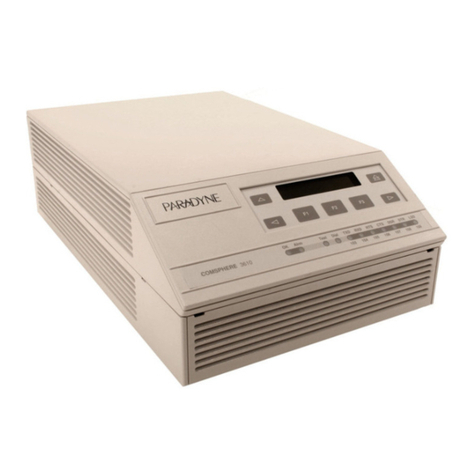
Paradyne
Paradyne COMSPHERE 3610 Quick reference guide
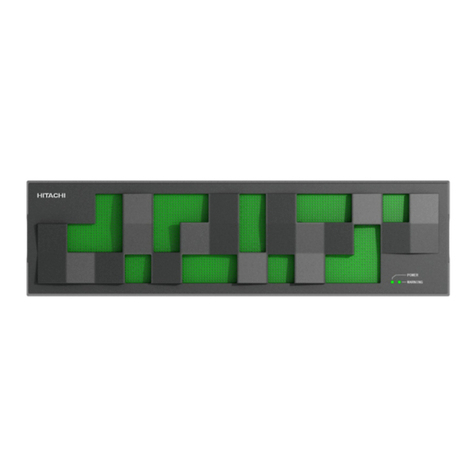
Hitachi
Hitachi 3080 G2 Hardware reference
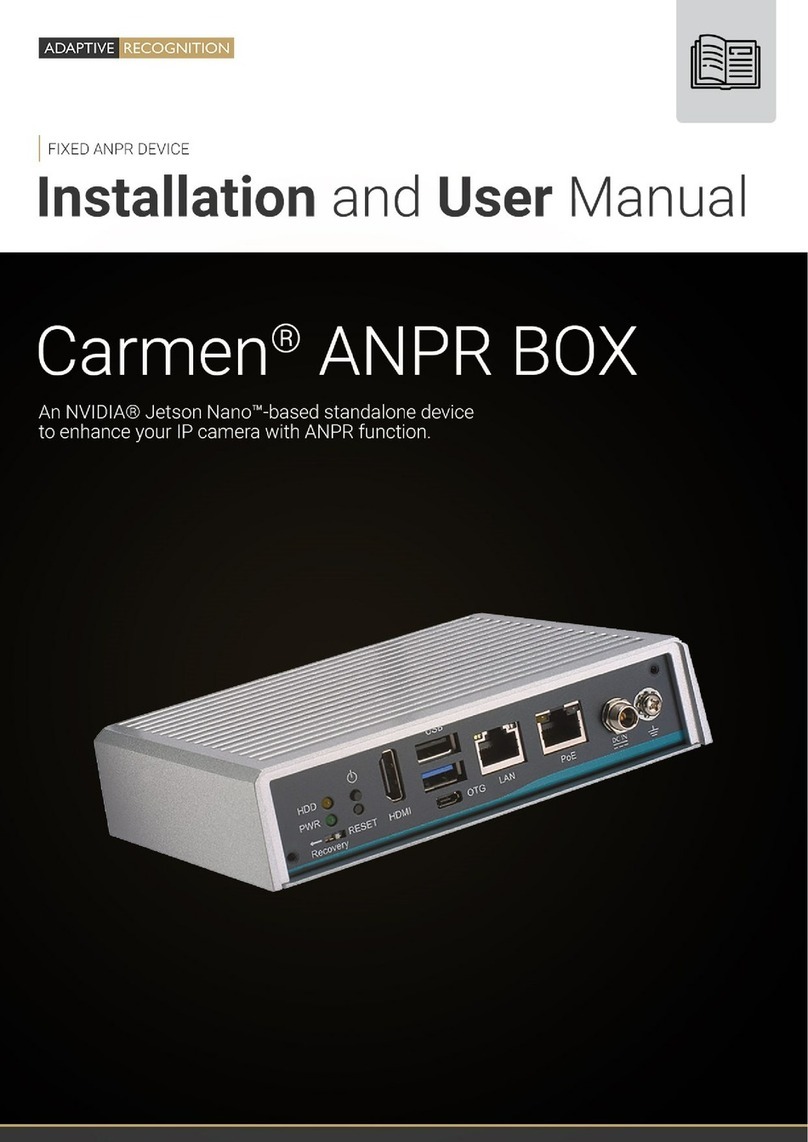
Adaptive Recognition
Adaptive Recognition Carmen ANPR BOX Installation and user manual

LTS
LTS LTN07256-R16 user manual

